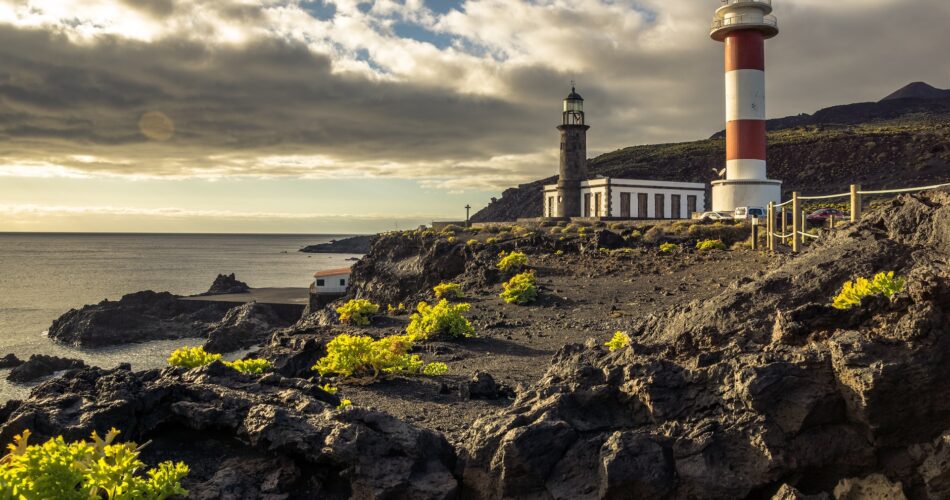Europeans travel to the Canary Islands every winter in search of a warm climate. The Canary Islands are a favorite winter destination because of their advantageous location. Their location means they have a climate with minimal seasonal temperature swings. Read on to find out why this is the best time to visit Canary Islands.
British and Europeans go to the Canary Islands every winter in search of a warm climate to spend their vacations. The Canary Islands are a favourite winter destination because of their advantageous location, which results in a climate with minimal seasonal temperature swings.
Is the best time to visit the Canary Islands something you’ve considered as you plan your next trip? Or maybe you’re reading this and thinking, “It’s winter in Europe, and I need some sun; would the Canary Islands be a good place to go?” Then read this post; it will answer all of your questions. We’ll explain why this is the best time to visit the Canary Islands.
When Is The Best Time To Visit Canary Islands?
To put it briefly, we think the Canary Islands are wonderful any time of year. With a subtropical climate, the islands experience mild winters and a long summer that continues into October. Naturally, there are variations between the islands, particularly due to their precise position and geography so that you can read more in-depth articles in our Canary Islands weather section.
In the winter, the high temperature on a sunny day can reach 23 degrees Celsius, while the low at night typically hovers around 16 or 17 degrees Celsius. This is because the climate varies greatly from north to south during the winter months on some islands, such as Tenerife and Gran Canaria.
More rain falls on La Palma and La Gomera than on the rest of the Canaries because of their humid subtropical climate. One of the most enchanted places to visit in Tenerife is the laurisilva forest, which thrives in the subtropical humid climate of the island’s northernmost regions.
It rains less in the spring and fall than in the winter, and it’s not as hot as it can get in the summer, so these seasons are often considered the best for hiking in the Canary Islands. La Palma, La Gomera, and the northern region of Tenerife are some of the best spots for hiking in the Canary Islands. Beautiful views of the sea and the surrounding mountains complement the abundance of lush vegetation.
The trade winds, which blow the most strongly from June to August, significantly impact the summertime climate. Summer vacationers flock to the Canaries in July and August when temperatures are at their highest. It’s not uncommon in the summer for entire Spanish families to travel here from Spain’s mainland to take advantage of the warm weather and beautiful beaches.
The water in the Canary Islands is at its warmest from August through October (as much as it can warm up because the Atlantic Ocean surrounds the islands). Indeed, the Canary Islands’ water temperature is never quite as warm as the Mediterranean during the summer. However, the water is still warm enough to swim in during the winter months (January and February) when it would be too cold to do so elsewhere in Europe.
The Canary Islands are extremely popular during the winter because even as the rest of the world experiences its first snowfall, the islands typically remain warm and sunny, with temperatures still in the 20s °C. We like to head to the south of the islands in the winter, specifically Tenerife and Gran Canaria.
The Best Time of the Year Is September Through November
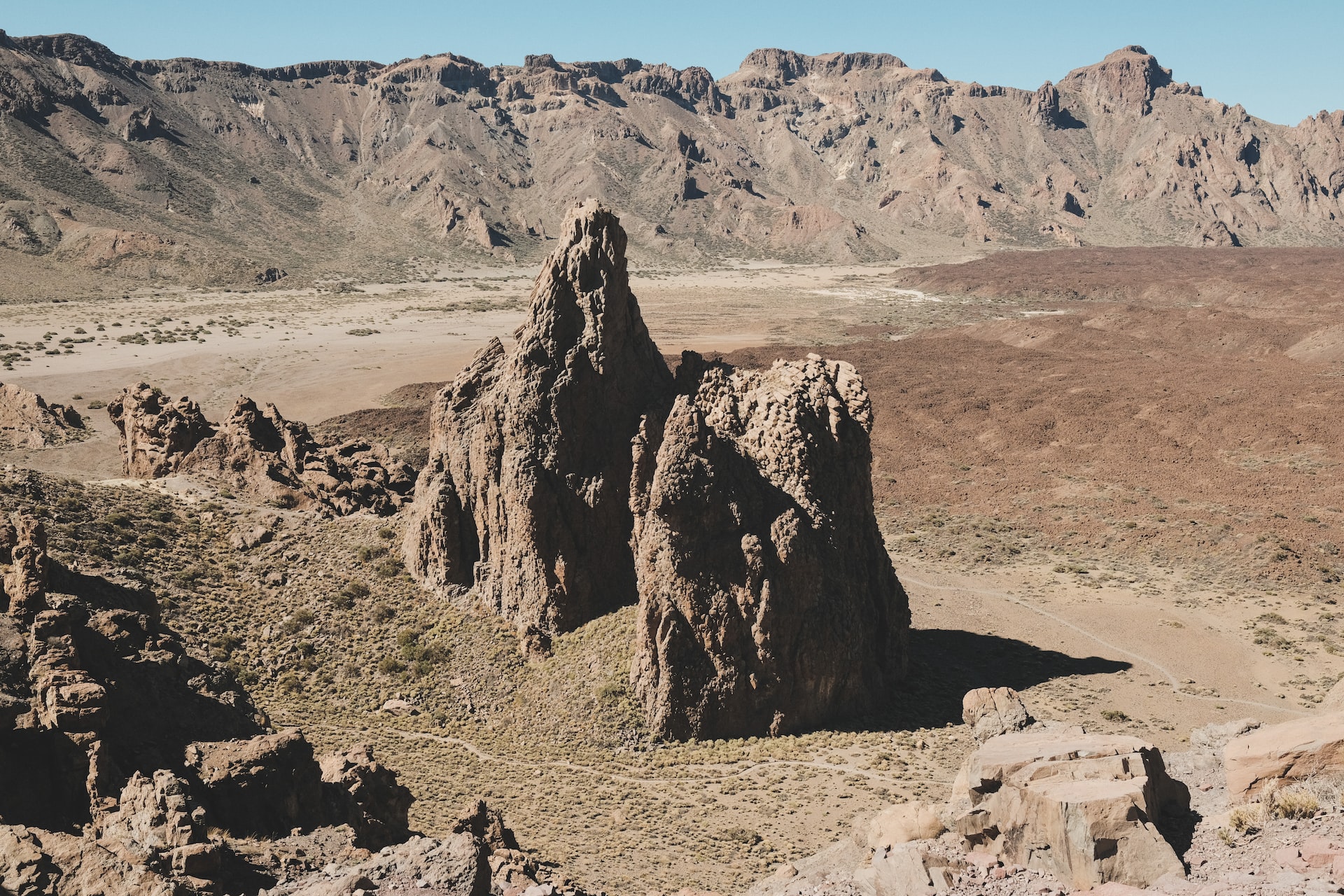
Teide National Park, Spain
A second wonderful time to go to the Canary Islands is in the autumn, specifically between September and November. The temperature and humidity levels are both low enough for you to feel comfortable participating in some outdoor pursuits. Spend your time relaxing on the beach or adventuring into the nearby mountains. The harvest season in the Canary Islands runs from August through October, and during this time, many of the islands’ vineyards are open to the public. If you consider yourself a true connoisseur of wine, now is an excellent time to make your way here. Fuerteventura is the only island in the Canary Islands that does not produce wine.
The other six islands do. Every one of the wine regions is situated in an area formerly volcanic. Discover how to make wine, get an education in viticulture in the region’s volcanic area, and taste some of the best wines. Then top it all off with a relaxing vacation at a beach resort. November is the most affordable month to travel to the Canary Islands because most resorts have special fall deals that can help you save significant money on your getaway. However, the Canary Islands start to see a slight increase in rainfall in November, so make sure you bring an umbrella with you on your trip.
The High Season is from December to February.
The Canary Islands are a popular winter destination in Europe, and visitors from that continent often head to the islands’ beaches to get one final taste of summer before heading back to their homes in regions with colder climates. The temperature never drops below 8 degrees Celsius or above 14 degrees Celsius, making it an ideal environment for golfers and swimmers.
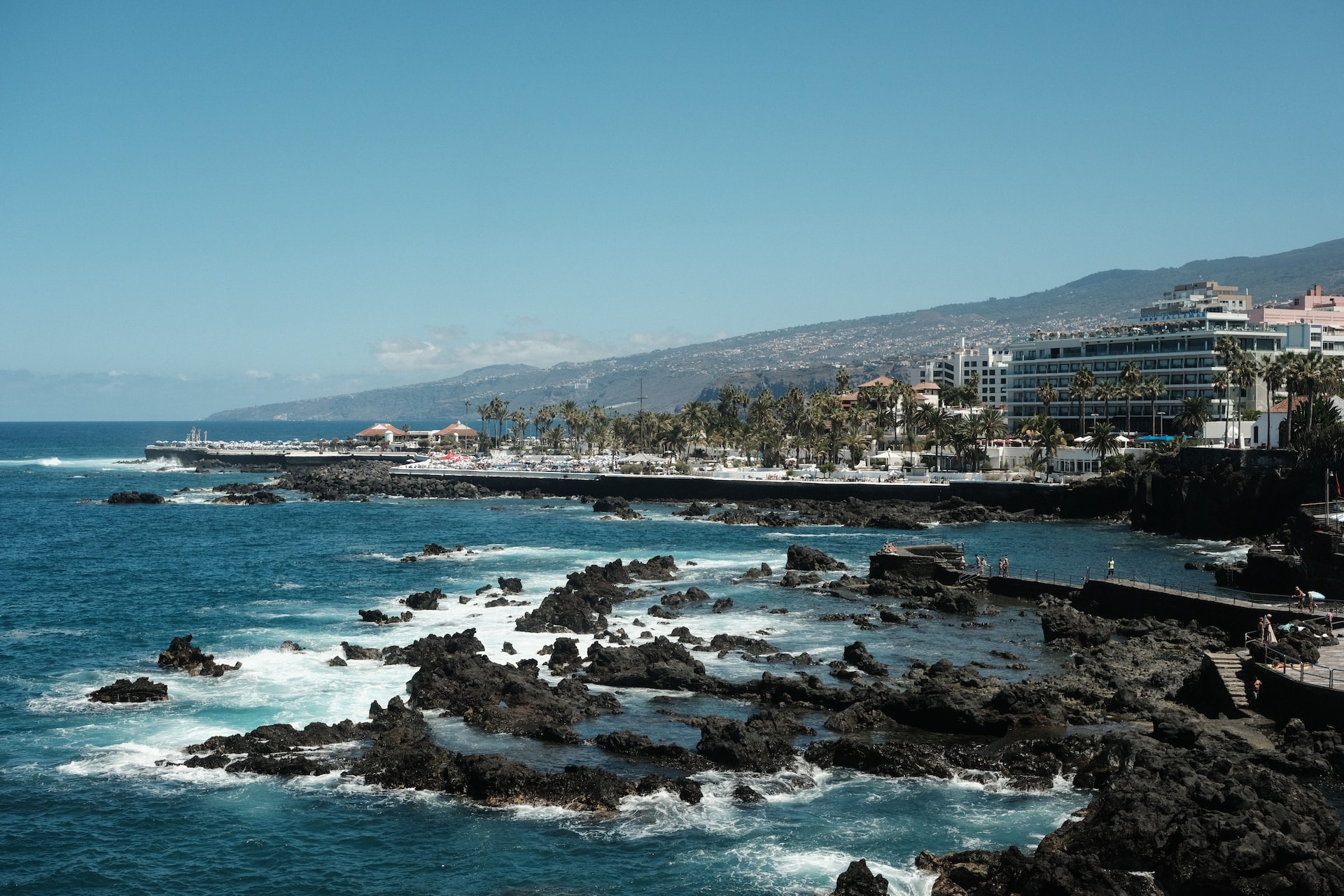
Puerto de la Cruz, Tenerife, Spain
Routes that wind through mountains and valleys are popular among hikers and cyclists. Twelve hours of each day are spent outside by families on their decks, at the beach, in the park, or somewhere else where they can soak up some rays. The month of February in the Canary Islands is considered to be the high season. Visitors who wish to experience the lively Carnival of Santa Cruz de Tenerife should be prepared for crowds packed around every event. Additionally, restaurants and hotels should be booked several months in advance.
Canary Islands’ climate and weather
The Canary Islands have a subtropical climate, meaning the winters are pleasant and the summers are exceptionally long, lasting into October. The average annual temperature on the islands is between 18 and 24 degrees Celsius, with no significant fluctuations in either direction. You can count on ten or more hours of sunshine every day during the summertime. Because of their humid subtropical climate, La Palma and La Gomera receive significantly more precipitation than the other Canary Islands. You can go swimming in the water at any time of the year, regardless of whether or not there has been recent precipitation.
Temperature And Amount Of Rainfall On Average
August is the hottest month of the year, with an average high temperature of 28 degrees Celsius and a minimum temperature of 23 degrees Celsius. The coldest month of the year is February, with daily highs averaging 20 degrees Celsius and lows averaging 15 degrees Celsius. The Canary Islands experience the least amount of precipitation during June, with 0 millimetres of precipitation and 30 days of perfect sunshine. The wettest month is October, with an average of 11 millimetres of precipitation falling in just one day.
Which of the Canary Islands Is The Best For You?
Tenerife
Tenerife is a perennial favourite among visitors to the Canary Islands because it is home to Spain’s highest peak, the 12,523-foot-tall El Teide, and its many resorts catering to British tourists. When you add the otherworldly 73-square-mile Parque Nacional del Teide, which is also on Unesco’s list, you have a recipe for some of the most exciting hiking in Spain. The five-hour hike up to the peak is only open to 200 people per day, so visitors should plan and purchase tickets online.
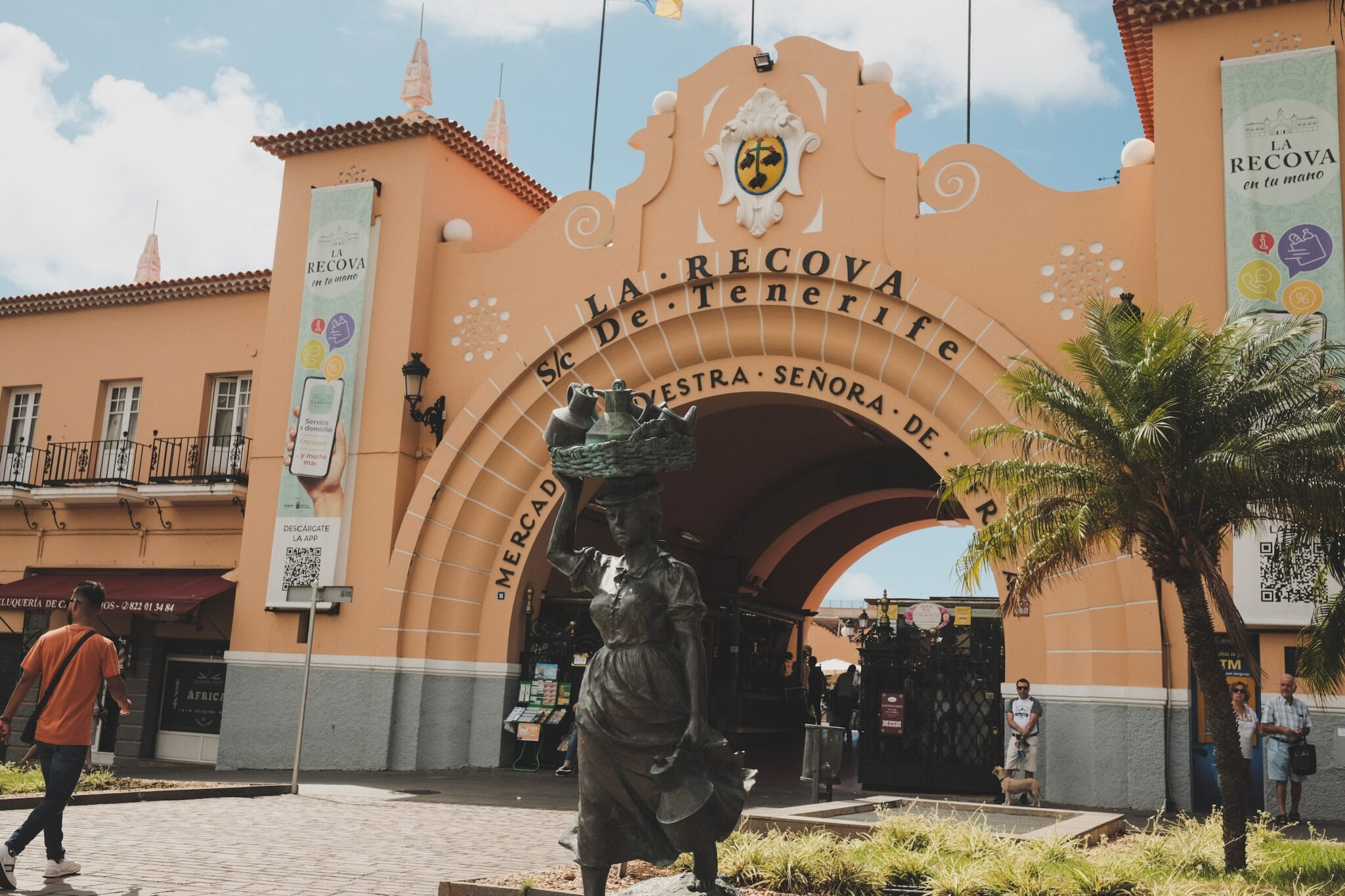
Santa Cruz de Tenerife, Spain
Other breathtaking hikes can be found all over the island whether through charming towns, fragrant Canarian pine forests, or steep valleys like the 6.5-kilometer-long (4-mile) Barranco del Infierno. The local food scene is also flourishing and becoming more refined every year. From Martin Berasategui’s two-star, Basque-inspired M.B. to the Padrón brothers’ seafood sensation El Rincón de Juan Carlos, Tenerife is the only Canary Island blessed with Michelin stars (six, at last count).
Gran Canaria
Gran Canaria, the most populous of the Canary Islands, is just as inspiringly diverse as the Canaries’ deliciously varied cuisine, despite its undeserved reputation for homogeneity. Intriguing pre-Hispanic sights, such as Gáldar’s Cueva Pintada, paint a picture of the Guanches, the original inhabitants of the archipelago. The mist-shrouded mountains give way to desert-like fields, lush laurel and pine forests (and a few packed tourist resorts).

Pico de Las Nieves Gran Canaria Spain
Afterwards, stop by a farmers’ market to stock up on creamy queso de flor (flower cheese) and other local goodies, or continue your exploration with a winding road trip through the island’s high-altitude centre, whose beauty and drama peak at top-of-the-world cave-village Artenara. Las Palmas de Gran Canaria, Spain’s ninth-largest city, is the capital of the Canary Islands and a cultural mecca.
Lanzarote
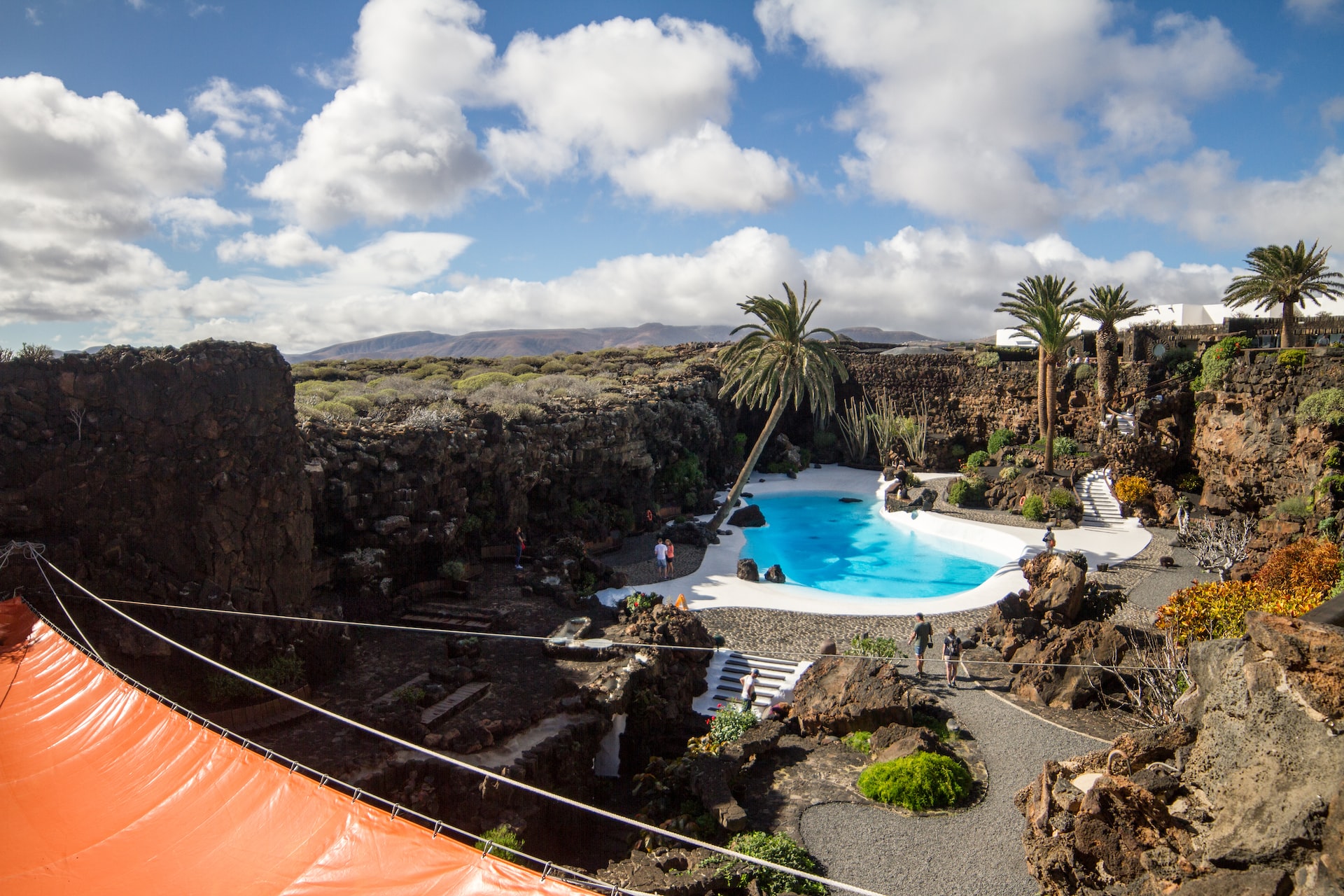
Jameos del Agua, Punta Mujeres, Lanzarote, Spain
Lanzarote is like a giant colour-changing natural canvas, with its brooding volcanic cones, gleaming black-pebble beaches, crashing Atlantic surf, and the occasional palm-spangled valley. There is a strong connection between the island and César Manrique, a 20th-century artist and environmental activist; his influence can be seen everywhere, from the whitewashed, sky-blue-windowed homes of tranquil coastal villages like La Caleta de Famara, Arrieta, and El Golfo to the unique lava-field house at the Fundación César Manrique. It all revolves around the 20-square-mile Parque Nacional de Timanfaya. Scramble up the vast Caldera Blanca on a 5.5-mile (9-kilometre) hike from the park’s edge and take in the sights of this otherworldly volcanic landscape.
Fuerteventura
The second largest of the Canary Islands (behind Tenerife), Gran Canaria has been a Unesco Biosphere Reserve since 2009. Its dazzling beaches, year-round sunshine, and raw, lunar-like beauty have long been draws for tourists.
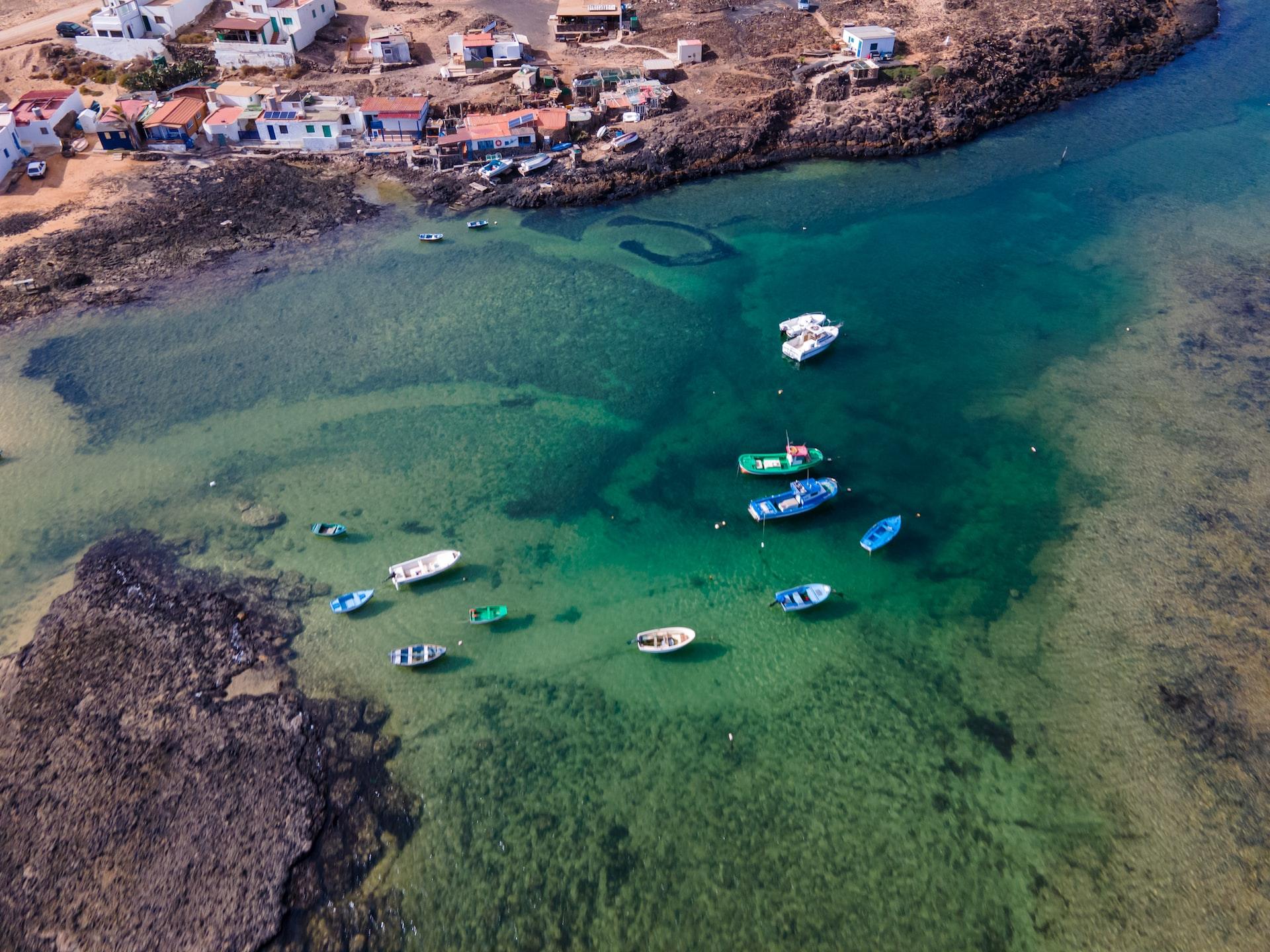
Corralejo, Fuerteventura Spanien
Fuerteventura, though windswept and evocatively arid, is blessed with some of the archipelago’s most idyllic beaches, including the honey-coloured dunes of the protected Parque Natural de Corralejo, the surf-crazed El Cotillo (originally a fishing village), and the blissfully undeveloped pale-gold Playa de Cofete on the island’s southern tip. You can go hiking, surfing, sailing, windsurfing, kitesurfing, and diving (even freediving), and there are numerous nature reserves to explore, such as the one on Isla de Lobos.
La Palma
La Palma is a beautiful, verdant island that receives surprisingly few visitors despite its striking landscape and unique culture. The island is known for its quiet pine groves, steep rainforested hills, and the graceful 16th-century mansions that fill the capital, Santa Cruz de la Palma. There are about 528 miles (850 kilometres) of trails crisscrossing the island, the most exciting of which are concentrated around the 18-square-mile Parque Nacional de la Caldera de Taburiente and a 5-mile-wide depression formed when a volcano collapsed in on itself.

La Palma, Canary Islands Spain
The 6082-foot peak of Pico de Bejenado, accessible via a 7-mile (11.4-kilometre) round-trip hike, is a visual spectacle of scatted pines, sharp ridges, and mysterious petroglyphs.
La Gomera
Bohemian La Gomera is a hiker’s paradise, with its densely forested hillsides and steep valleys that cascade down from the wind-battered 4878-foot-high Alto de Garajonay. Trails crisscross the island, from the fairytale-like 15-square-mile Parque Nacional de Garajonay in the island’s centre (try the 6.5-mile downhill Alto-Hermigua hike) to the thrilling paths that cling to sheer valley walls or wind along the blackened volcanic coastline. After a long day of hiking, relax in San Sebastián de la Gomera.
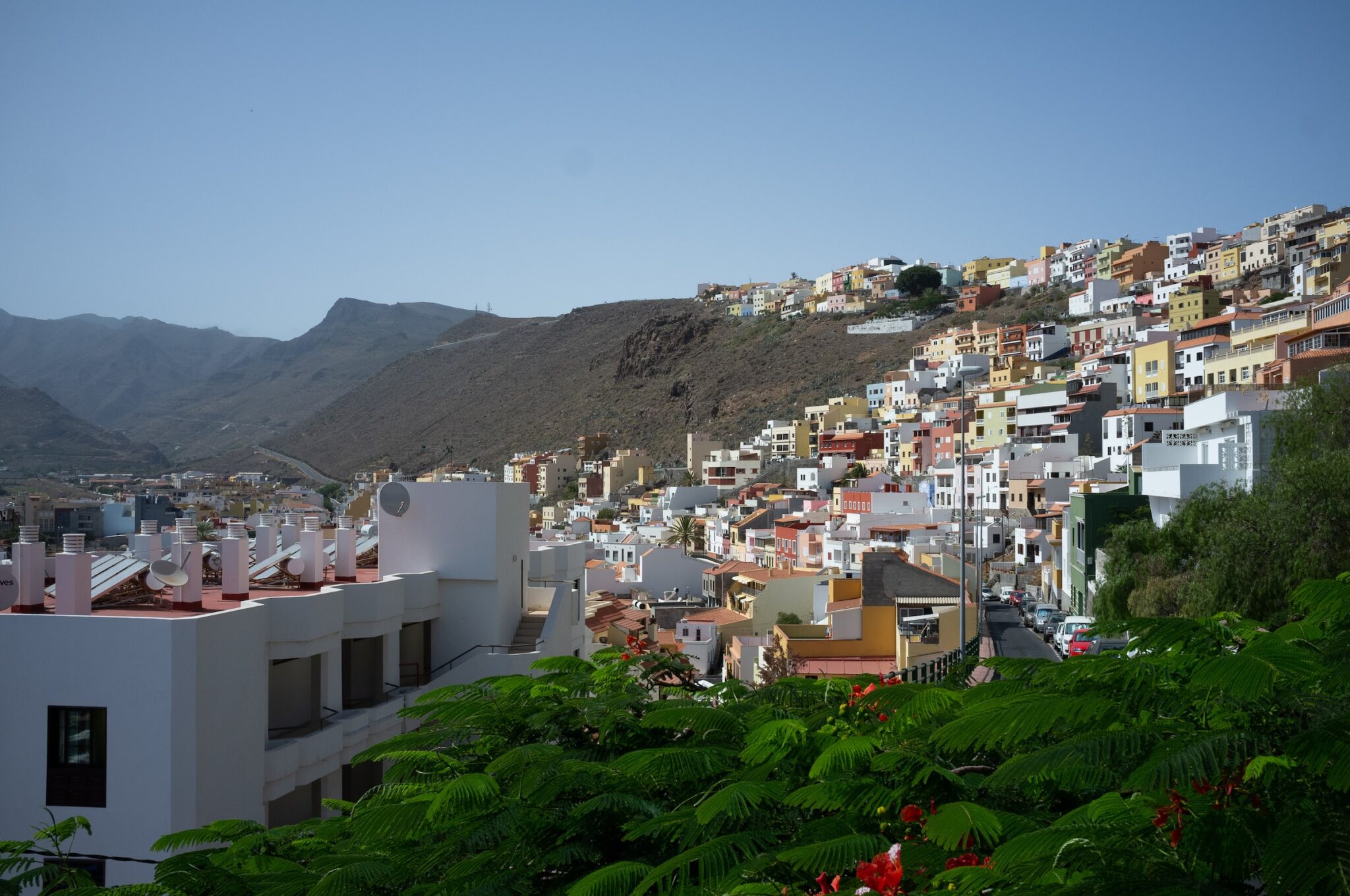
La Gomera
This city hugs the coast and enjoys some of the island’s delicious specialities, such as potaje de berros (watercress stew), miel de palma (palm honey), and fresh goat’s cheese.
El Hierro
Everyone who makes it to the westernmost island of the Canaries knows they’re onto something special. El Hierro has been a protected Unesco Geopark since 2014, and there are plans to make it the world’s first energy-self-sufficient island. It is surrounded by glittering natural pools and impenetrable volcanic cliffs.

El Teide Spain
Hiking trails, such as the historic Camino de la Virgen, which spans 16 miles (27 kilometres) and winds through flower-filled fields and fragrant pine forests, can be found here at what seems like the very end of the world. There are other trails, such as the 2.7-mile (4.4-kilometre) Camino de Jinama, which leads along the tops of cliffs overlooking lava fields and gives hikers a real thrill. Meanwhile, the calm waters of Mar de las Calmas near sunny La Restinga in the south reveal some of the best diving in the Canaries in the warm, clear Atlantic waters off El Hierro’s craggy coastline.
Discovering Canary Islands: A Journey through Its Best Experiences
Conclusion:
Picture seven fantastical islands are appearing in the Atlantic Ocean, just off the coast of Morocco. Currently, you are in the Canary Islands, an archipelago where each island captivates its unique culture, history, and natural beauty.
Spectacular beaches and year-round spring weather are the first things that come to mind when people hear about the Canary Islands. It doesn’t matter what time of year you go. Any of the Canary Islands is a fantastic vacation destination. Dream beaches, hiking, bird watching, and scuba diving are just some of your year-round pursuits.
Frequently Asked Questions (FAQ):
Which Canary Island is the least windy?
Tenerife South is less windy than the eastern coast, so staying in Los Cristianos, Las Americas, Costa Adeje, Playa San Juan, Playa Paraiso, La Caleta or Caleta Salvaje will be considerably less windy than El Medano, Punta del Hidalgo or Bajamar for example.
Which is the most beautiful Canary Island?
La Palma, in addition to being the most beautiful Canary Island, has a fascinating volcanic landscape. It may not be as popular as Teide or Timanfaya National Park because its creation is much more recent. However, the volcanoes of Fuencaliente are a great place to visit in the Canary Islands
Which Canary Island gets best weather?
Our recommendations for the best Canary Islands for winter sun would be TENERIFE and GRAN CANARIA. This doesn’t mean you should avoid the other islands, because the weather will still be warmer than most other places in Europe, but you will just have to expect more wind and a few more showers during the day.
What is the cheapest time of year to go to Tenerife?
The cheapest months include March, April, May (excluding the Easter period), October and November. The temperature in Tenerife rarely dips below 18°C in these months, so sightseeing, hiking and other activities are all still possible – and there will be fewer people on the beaches.
Which is the most unspoilt Canary Island?
Though often overlooked, the small Canary Islands of La Palma, El Hierro and La Gomera are natural beauties, says Paul Richardson. The three smallest islands in the Canary Islands are La Palma, El Hierro and La Gomera. They are also the least visited, and the least ‘spoilt’


